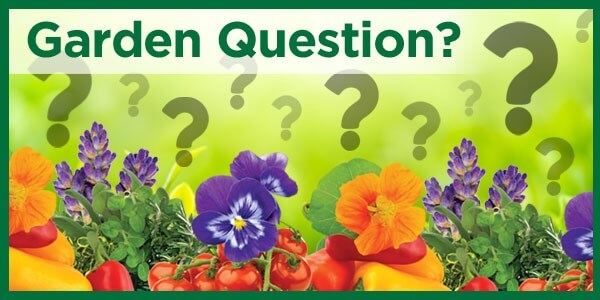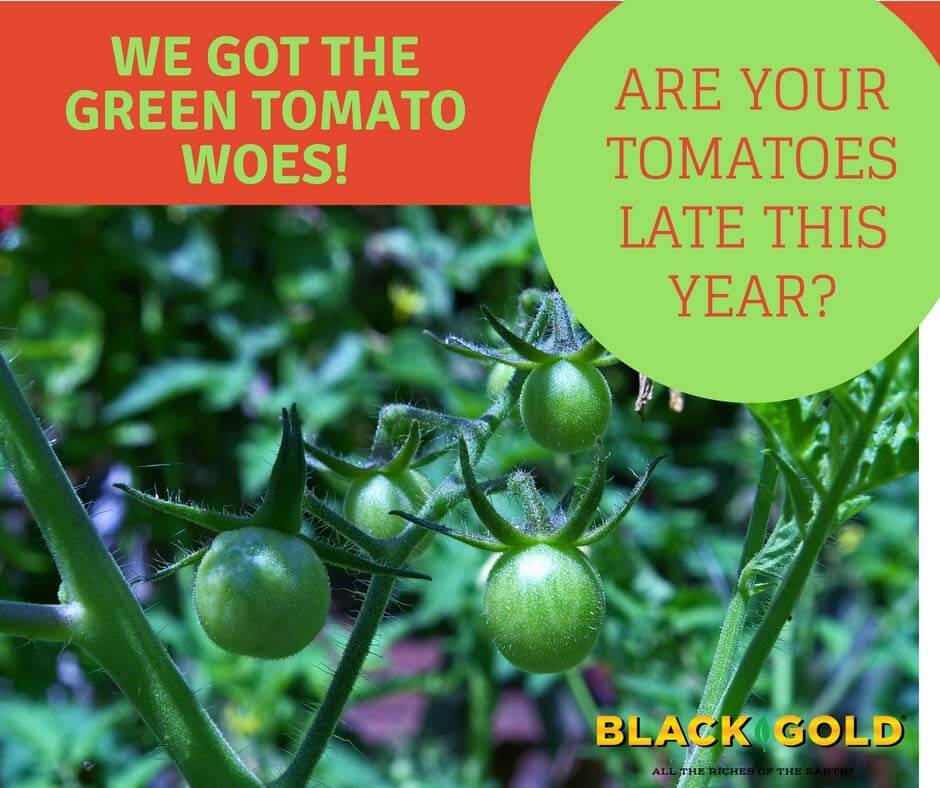“If weather promises to be uncompromisingly unpredictable in years to come, choose tomato varieties that will be resilient to unexpected weather.”
It’s early August and most of my 15 tomato vines—beefsteaks, paste, and salad types—still have green fruit. Two lean-to-ripen cherry tomatoes are the only yielders, so far.
For loads of the Mid-Atlantic gardeners, it’s the same story. The summer of 2018’s tomatoes are a month late in ripening. Plants that “always” bear in early July are still hanging green on the vine in August. I’ve spoken with so many frustrated gardeners in my community garden with green-tomato woes. So, what’s the cause?
What Tomatoes Need to Thrive

Let’s start with what tomatoes need to grow and produce super fruit by late June or early July. Most average gardeners start by planting large, vigorous plants after the last frost date (link to Frost Dates By Location). From there, tomatoes need:
- Consistent warm day (70-85 degrees F) and night temperatures (65-75 degrees F)
- Fertile raised soil that drains well
- Good fertilizer
- Regular water
- Protection from pests and diseases
- Good support and pruning makes harvest easier
What Keeps Tomatoes from Greening?
Cold, wet conditions are often the heart of the problem. Not only does cold and excess moisture slow tomato fruit development, but they reduce the flavorful sugars in the fruits, and encourage a suite of disease problems on plants and fruit. Fruit size may also be impacted, and cold causes tomatoes to develop tougher skins. Then if a few tomatoes to manage to color up, they crack from too much water.
What’s Keeping Tomatoes From Greening in My Area?

Endless drizzly cool days are the core of this year’s tomato lateness. Even early in the season, it was cold and wet. The months of March, April, May, and even early June were unseasonably cold and rainy, making bed prep and planting difficult.
 We managed to get our large, strong tomato plants into the ground by mid-May—making sure to raise and fortify planting rows with OMRI Listed Black Gold Garden Compost Blend and plenty of quality tomato fertilizer. Then we mulched them with straw and leaf mulch to reduce weeds and make harvest less muddy. The plants grew, but the fruits that appeared hung green and underdevelopment on lush vines.
We managed to get our large, strong tomato plants into the ground by mid-May—making sure to raise and fortify planting rows with OMRI Listed Black Gold Garden Compost Blend and plenty of quality tomato fertilizer. Then we mulched them with straw and leaf mulch to reduce weeds and make harvest less muddy. The plants grew, but the fruits that appeared hung green and underdevelopment on lush vines.
The month of July burst forward with a week or two of sunny, hot, dry days, giving gardeners a ray of hope, but wet weather and cool days quickly returned. The last week of July was a rainy mess, causing a few low-lying neighboring plots in our community garden to pool with water, resulting in total tomato rot.
The first week of August has started sunny and warm, but the fruit on most vines are still green or just beginning to blush with color. Most of the colored cherry tomatoes cracked in last week’s rain fest. If dry, warm days remain, we should finally get good tomato harvests! If the days get too hot, it will keep tomatoes from producing satisfactorily due to excess heat. It’s all a balance.
Can You make a Bad Tomato Year Better?

Yes! Aside from hoping and doing ritualistic dances to the elusive Gods of sun and heat, there are a few things that can help. Here are a few tips that can be implemented this year and next.
Prune: Remove any wild excess stems with tiny fruit. This will increase air flow to dissuade fungal or bacterial diseases and encourage the plant to put its energy towards supporting the development of larger fruits on the vine.
Plant tomatoes high: Planting tomatoes in raised beds, deep pots, or raised rows will save them from excess moisture and rot at the root zone. It can even protect against fruit crack.
Let them dry: Let the garden dry for several days—even a week—before manually watering after heavy rains. Not only will this help slow any fungal or bacterial diseases, but it will help intensify the sugar development in your ripening tomatoes.
Plan for the future: If weather promises to be uncompromisingly unpredictable in years to come, choose tomato varieties that will be resilient to unexpected weather. Choosing early, high yielding, disease resistant tomato varieties will always increase your chances of success. It’s also wise to choose a tomato or two bred for cooler growing conditions or one or two bred for hot growing conditions.
Two good varieties for cool growing conditions include ‘Aurora‘, which bears loads of tasty, medium-sized, red tomatoes fast and early, and ‘Alaska‘, which quickly produces red salad tomatoes on short vines in cool weather. Two good varieties for high heat includes the large-red-fruited ‘Heatmaster‘, which can take the high heat of the South, and disease and heat-resistant ‘Heatwave II‘, which bears deep red tomatoes with good flavor.
 We’d love to hear your tomato stories and answer any tomato questions you might have! Visit Ask a Garden Expert to learn more!
We’d love to hear your tomato stories and answer any tomato questions you might have! Visit Ask a Garden Expert to learn more!


